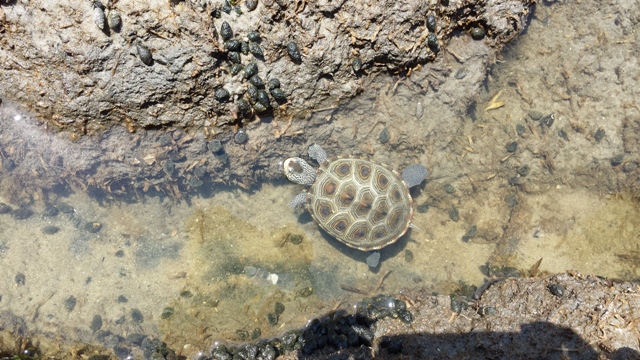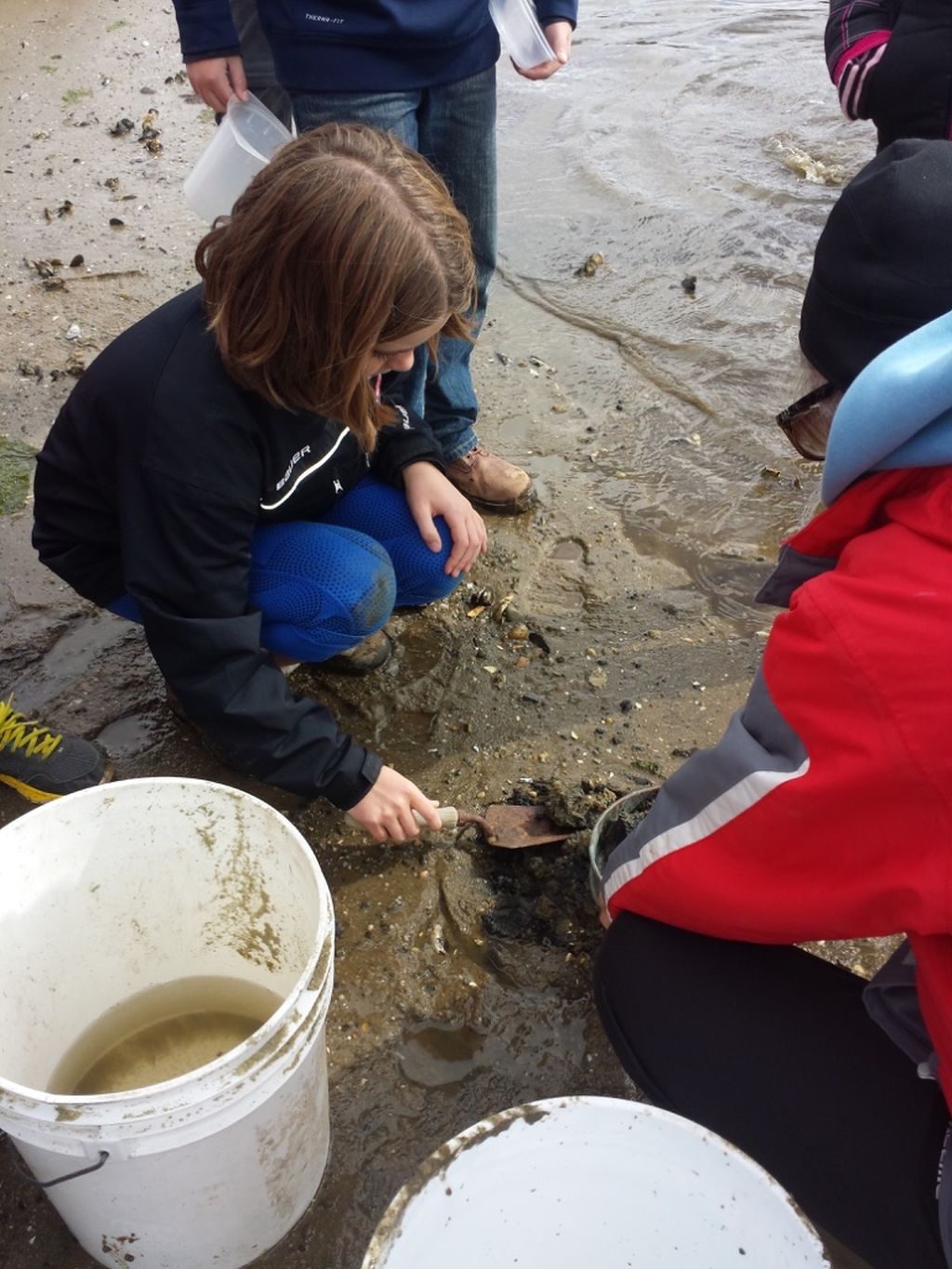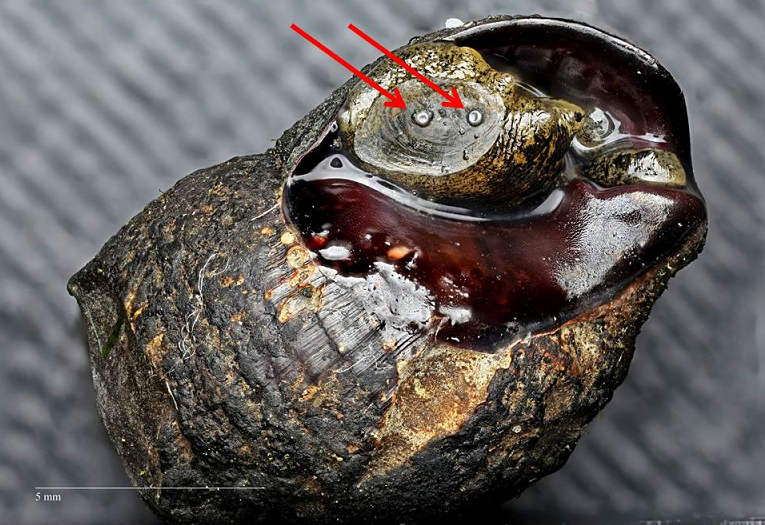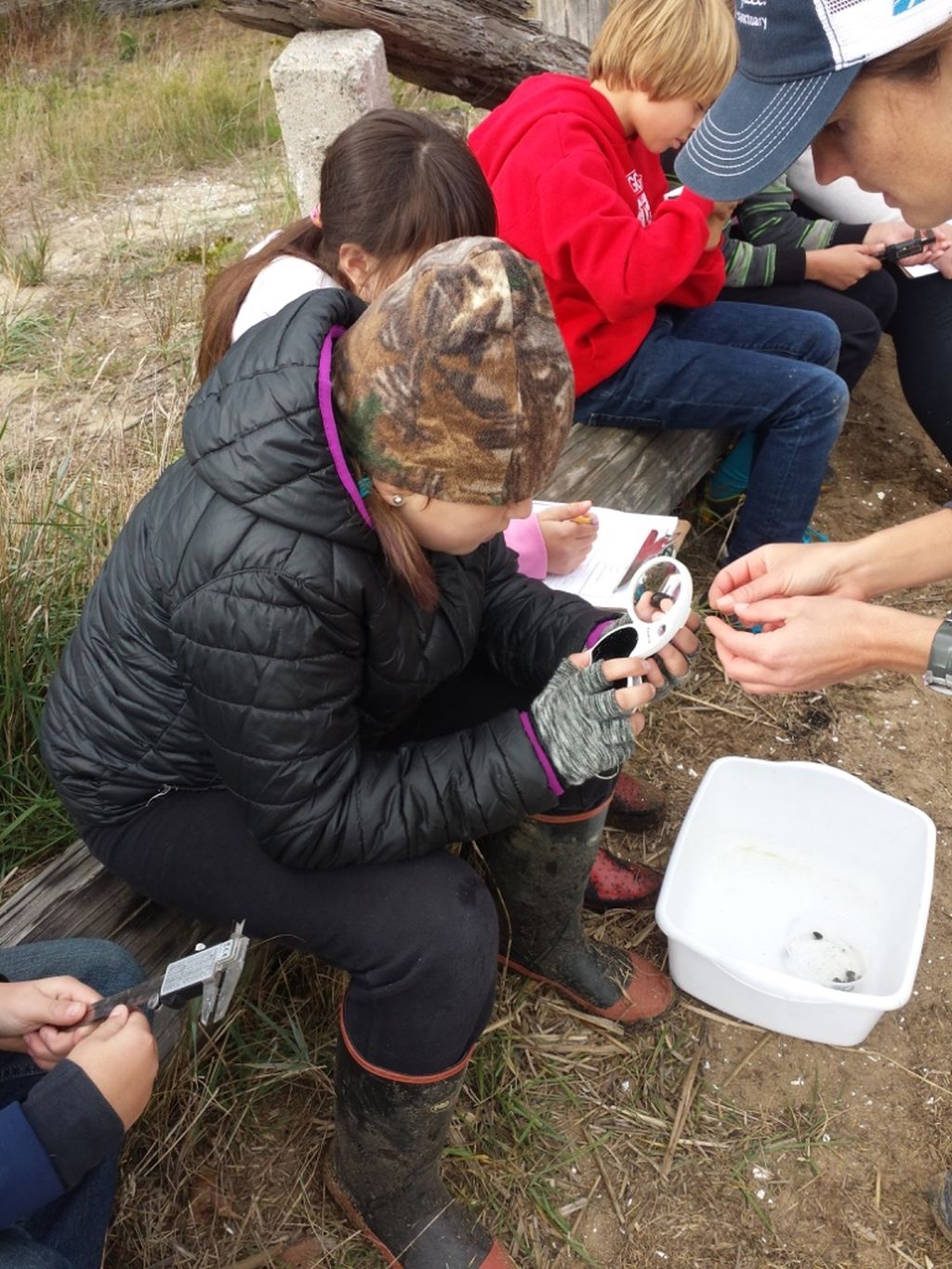It’s an intriguing hypothesis: can a parasite that requires both mud snails and diamondback terrapins to complete its life cycle be an indirect way to assess the abundance of terrapins in a given habitat?

Swimming terrapins can be fast and elusive (photo by Leah Desroches).
This is a question Wellfleet fifth graders have tackled, thanks to a grant from Wellfleet SPAT (Shellfish Promotion and Tasting) which funds a customized coastal curriculum provided by Wellfleet Bay.
The hypothesis arose from this problem: Diamondback terrapins are hard to survey. The turtles are tricky to capture and not easy to mark and recapture for counting.

Carefully collecting mud snails at Herring River (photo by Sheila Hoogeboom).
Enter the parasite Pleurogonius malaclemys, a trematode, that uses a favored terrapin food—mud snail—as a host in its larval stage. Evidence of this parasitic critter takes the form of a cyst that can form on the snail’s shell or its operculum (which protects the snail’s foot when it withdraws into the shell).

Snail with parasitic cysts. Could these be used to estimate terrapin abundance? (photo from Russell Burke)
Since terrapins love to chomp on mud snails the trematode ends up in the only host it wants to live and reproduce in, the intestinal track of the terrapin. Eventually, the parasite’s eggs are excreted by the turtle and the cycle resumes. Theoretically, the number of mud snails with cysts should roughly correspond to the number of terrapins living in the same salt marsh system.

Students work with hand lenses to check for cysts on snails. (photo by Sheila Hoogeboom).
It should be noted that this is actual research going on at Hofstra University in New York. But by doing some of the field work associated with it, Wellfleet fifth graders are learning basic scientific skills: planning their experiment, heading out to the Herring River, collecting the required materials (snails), measuring them, examining them for evidence of the parasite, and recording the data.
They did have some special help. Retired Wheaton College biologist Barbara Brennessel and Wellfleet Bay citizen scientist Karen Strauss facilitated the research. Results were presented at this year’s Wellfleet Harbor Conference.
Thanks to SPAT, Wellfleet Bay educator Spring Beckhorn, Wellfleet Elementary fifth grade teacher Kathleen Ferri, and other engaged community members, local students are experiencing hands-on field research in what is virtually their own backyard.



I am fascinated to read this story and thrilled for the kids at Wellfleet Elementary to have this amazing opportunity!! My Mother taught Kindergarten at Wellfleet for 15 years, ( Jean Jensen) , I grew up in Orleans . I also majored in Biology at Wheaton College and was incredibly lucky to be in several classes taught by Dr. Brennessel !!! Bravo to all!!